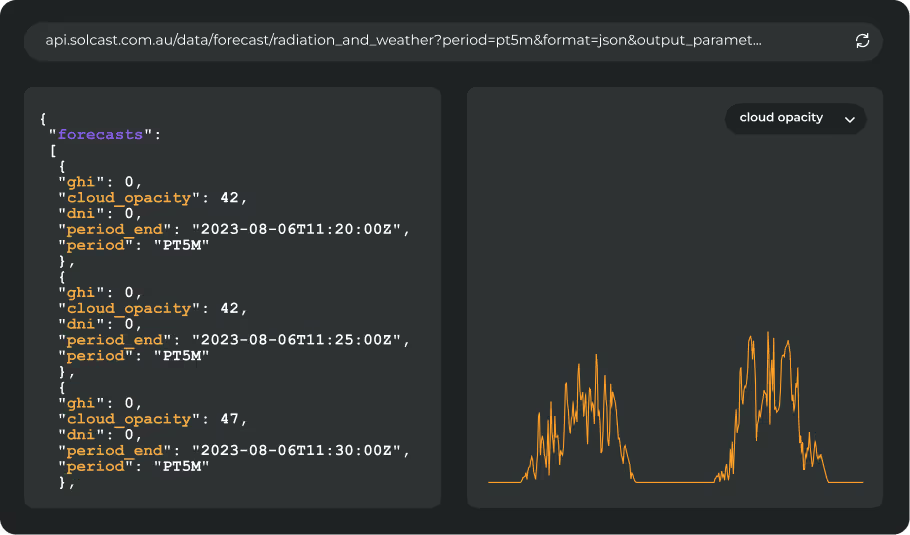Irradiance and PV production was more than 15% below normal during February across most of Europe. The production shortfalls were due to thick clouds in moist westerly winds from the Atlantic, penetrating more strongly and further east than usual for this time of year.
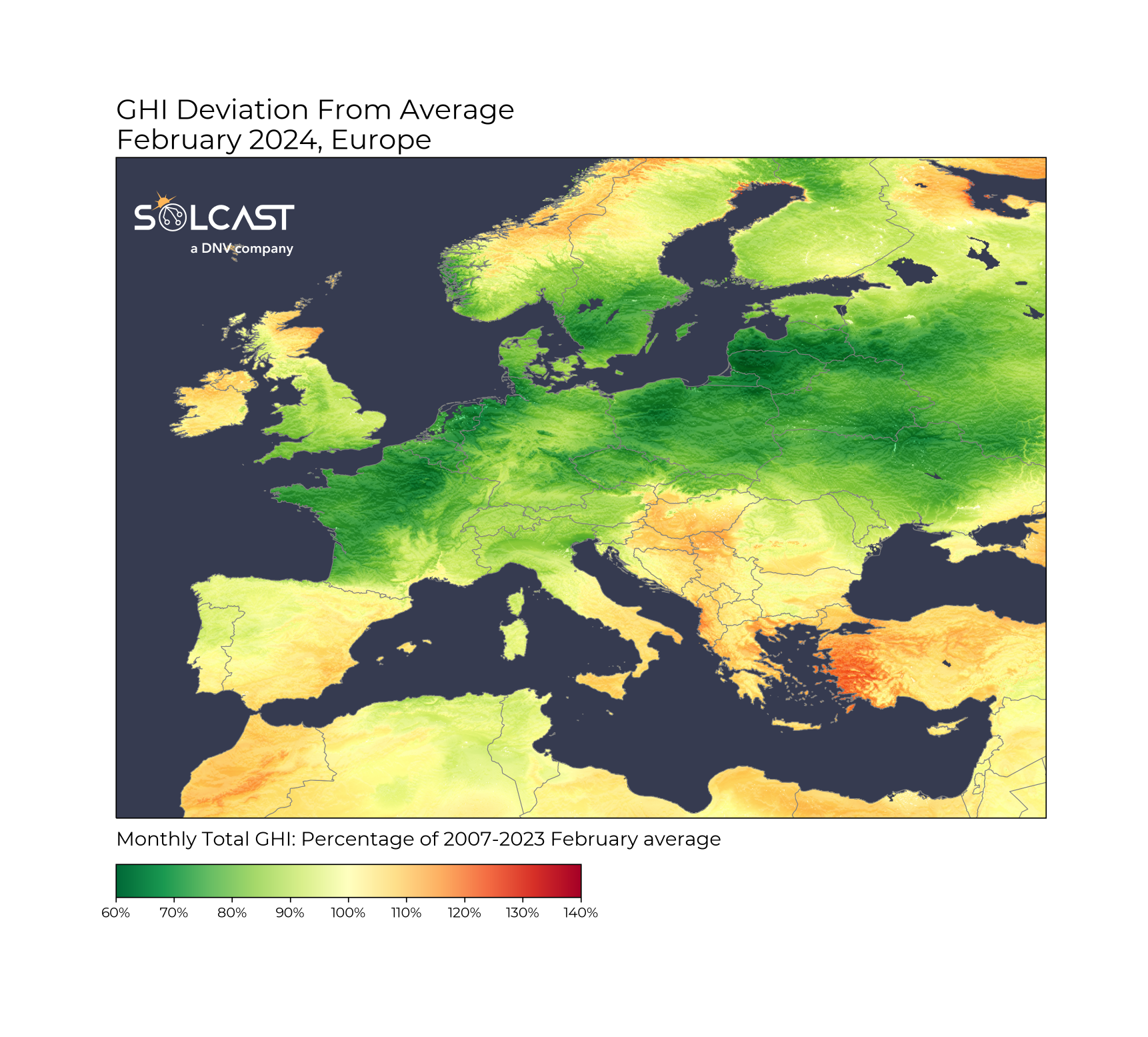
The large shortfalls in solar production compared to February normals spanned a vast area, across the UK (-13%), France (-19%), Belgium (-31%), Netherlands (-35%), and Germany (-17%). Shortfalls of similar magnitude were seen across Switzerland, Northern Italy, Austria, Czech Republic, Slovakia, Poland, southern Sweden, the Baltic states and Ukraine. Some locations in France and Poland reached as low as 40% below normal irradiance.
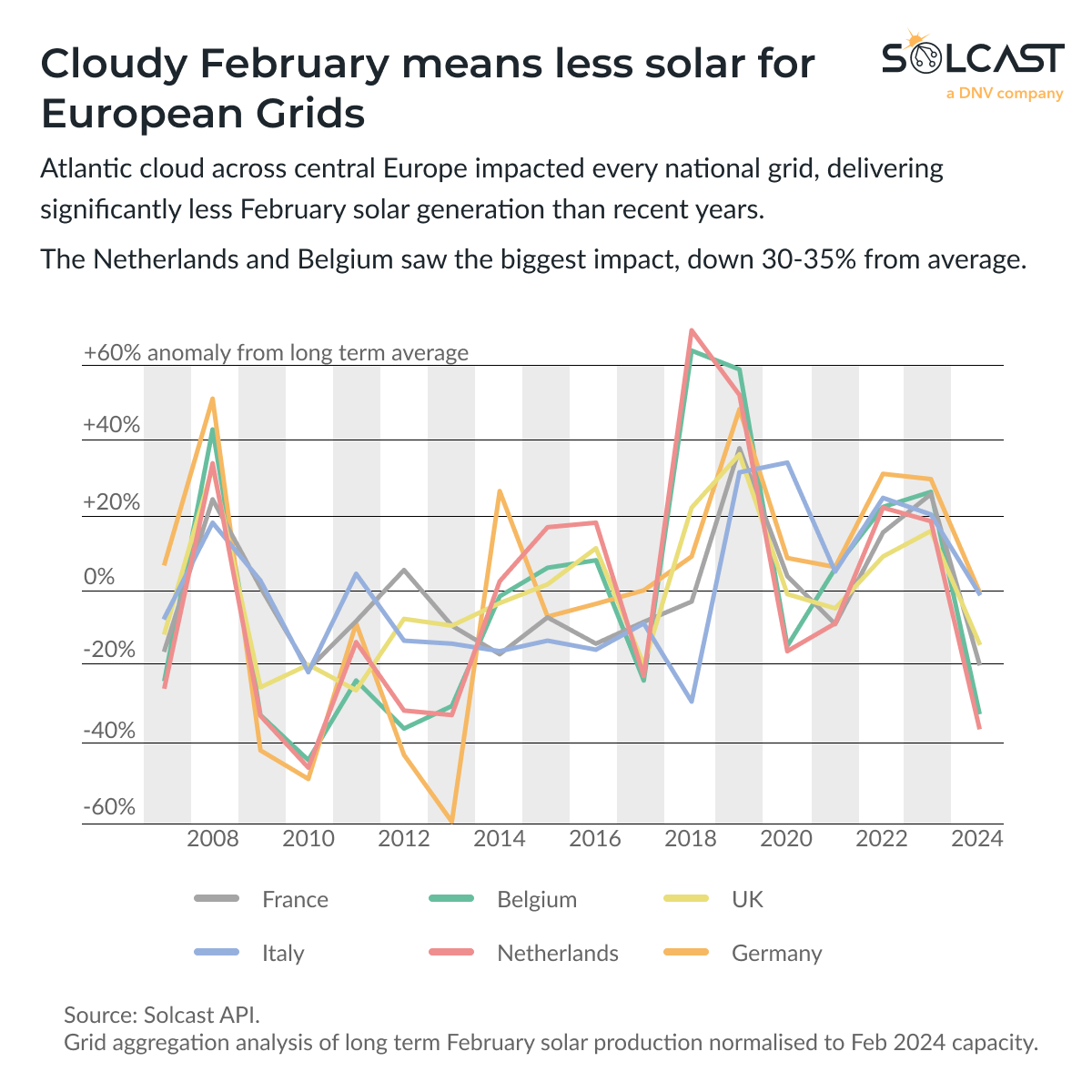
The thicker-than-usual clouds were the result of a series of low pressure systems in the vicinity of Iceland, Norway and the UK. These low pressure systems drove moist westerly winds and clouds from the Atlantic deep across Europe north of the Alps.
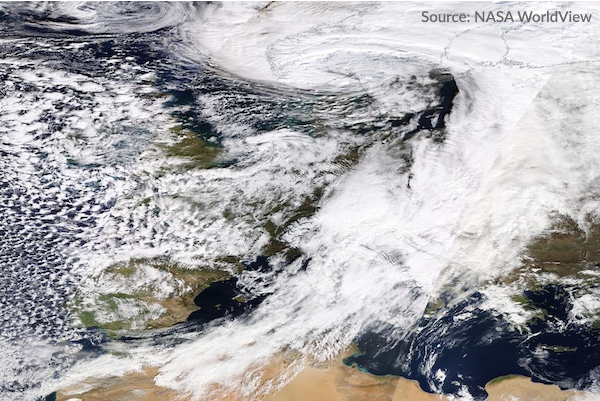
With high winter-time precipitation, the solar production shortfalls could have been even worse due to snow soiling. Above-normal temperatures led to more rain than snow during February 2024.
Further south, conditions were closer to normal in more stable weather conditions across Portugal, Spain, Southern Italy, Greece, Turkey and the Balkans. Mean daily irradiation in these areas during February reached up to 4 kWh per day, with some areas receiving 120% normal irradiance. Ireland and Scotland, also received more irradiance than normal in February, but mostly due to the shorter days, this was still less than 1.5kWh per day.
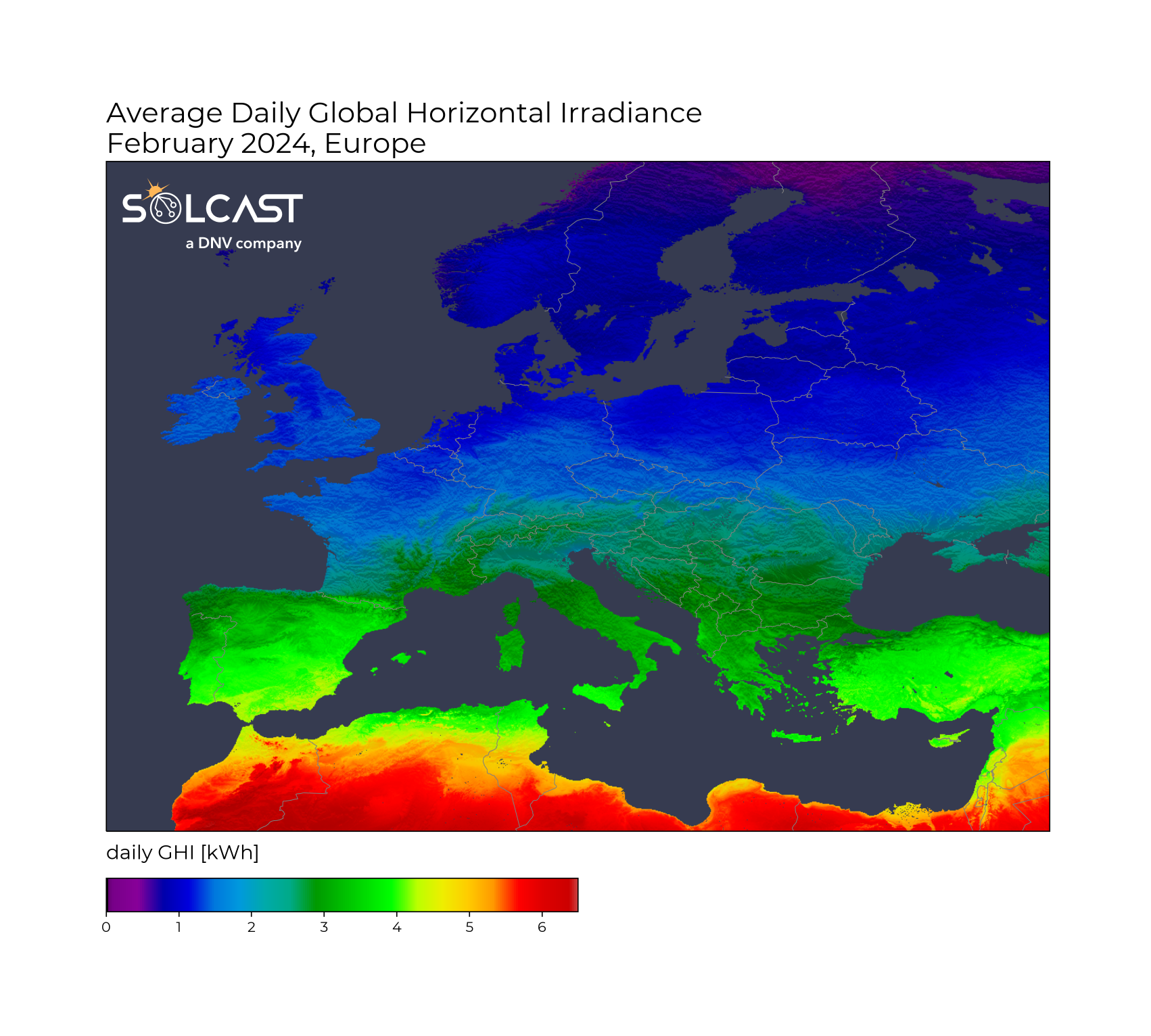
Track weather conditions, cloud movements, and irradiance-influencing factors that impact your solar generation. Access bankable actuals and accurate forecasts when you sign up for a Solcast API toolkit. You can reach out to our team for an extended trial.








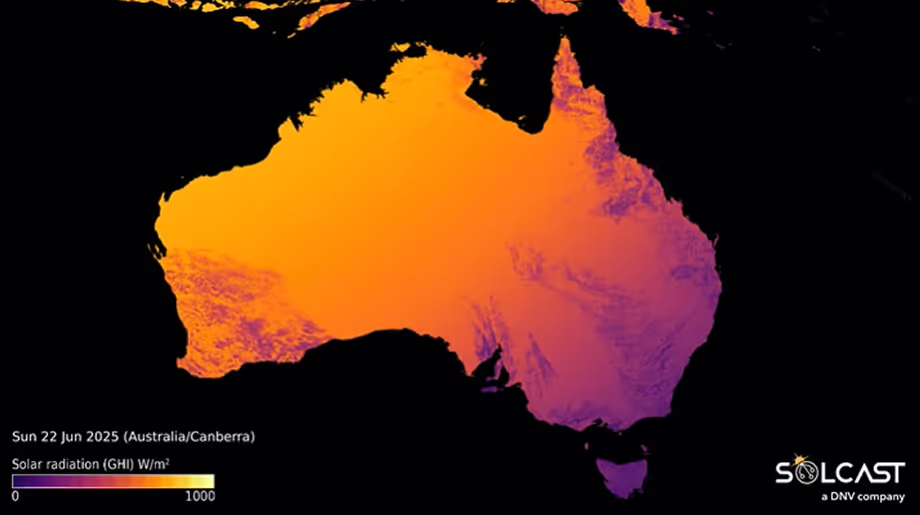
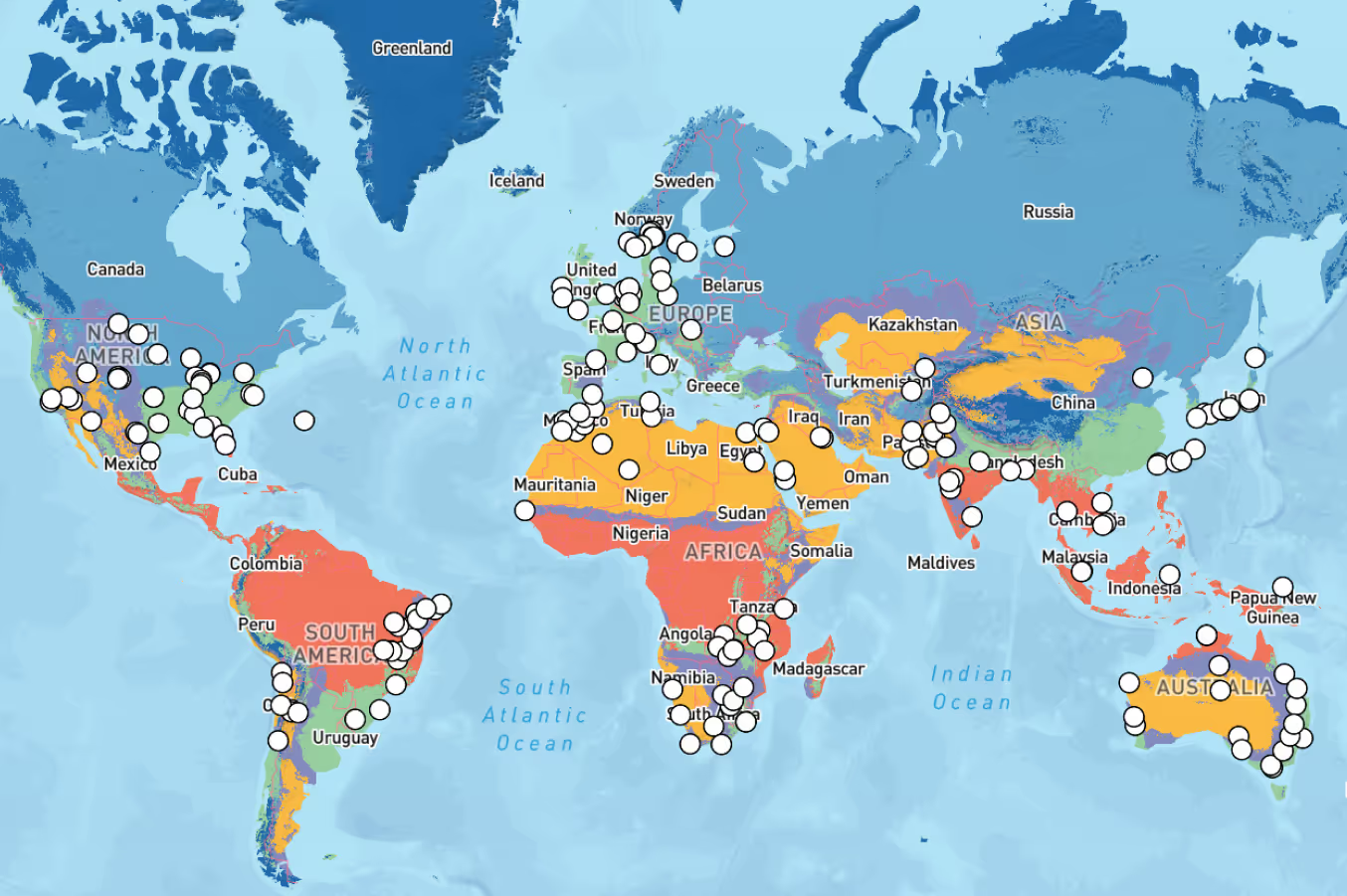
.avif)
